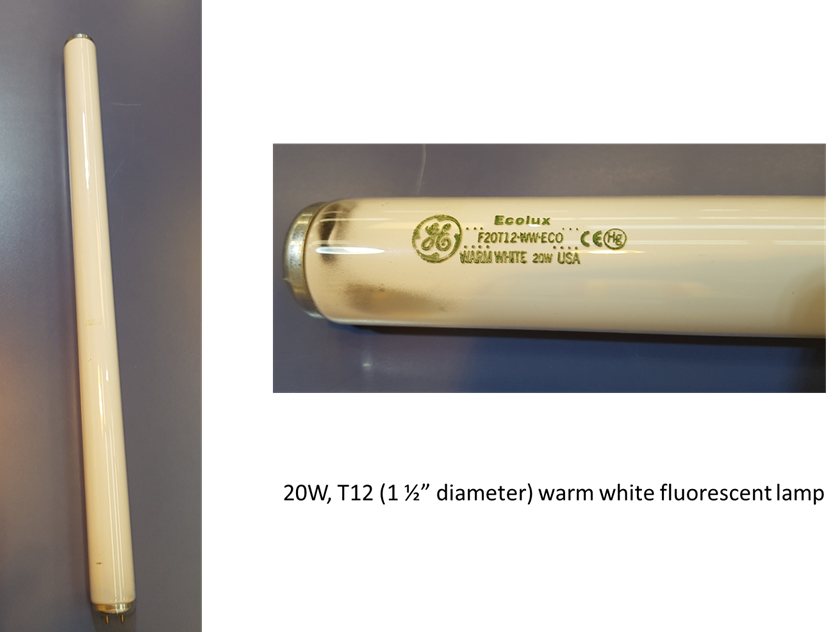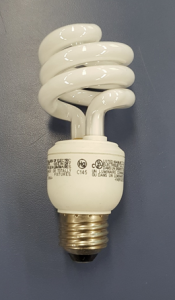19 Fluorescent Lamps: General
Aaron Lee
Fluorescent lamps are a type of gas discharge lighting, and are one of the most ubiquitous lamps in use today. Their main applications are in office spaces and commercial or industrial buildings. They provide a steady white light with a good CRI and a range of color temperatures. Fluorescent lamps are much more efficient than incandescent lamps, and range in efficacy from approximately 50 to 100 lumens per watt, depending on design and specifications.
The most common variety of fluorescent lamp is the four-foot T12 lamp, although it is being replaced by the four-foot T8 lamp.

Lamp width is measured in eighths of inches (1/8″), so the designation T12 describes a (T) tubular-shaped lamp that is twelve-eighths of an inch in diameter (12/8″), or 1 ½ inches in diameter. The T8 is a tubular-shaped lamp one inch in diameter (8/8″).
When comparing lamps of the same length, a T12 will require a lower striking voltage than a T8 lamp. As a rule, the longer and thinner an arc tube is, the higher the striking voltage necessary to turn the lamp on. One way to think about it is to compare arc tubes to lengths of copper wire: a longer, thinner piece of wire will have more resistance than a shorter wire with a larger diameter.
The entire length of the lamp is the Arc Tube, where the light is produced, and it is filled with a starting gas made of argon or krypton and a small quantity of mercury. The tube is then sealed with a cathode inside and the inner layer of the glass tube is given a phosphor coating.

Recently Compact Fluorescent Lamps (CFL’s) have come onto the market to replace older incandescent bulbs. They employ an internal electronic ballast integrated into the base of the lamp. These bulbs have a standard Edison screw base so that they can be retrofitted into existing lamps holders and energized at 120 volts.

